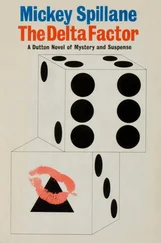William H. Lovejoy
Delta Green
This one is for my son,
the new graduate,
David Lovejoy
DELTA BLUE
“Mach two-zero, jefe. ”
“I’m still with you, Tiger” McKenna said, his eyes performing the automatic cockpit scan. The digital numbers reported the angle of attack at the correct forty degrees, so he figured that, once again, he’d let the computer play commander of the craft. As a pilot who had flown anything from Stearman bipes to F-16 Fighting Falcons and loved them all, the most difficult thing he had learned to do was to let some magic box of silicon take his job away from him.
He had relied on the computer almost four hundred times in this segment of the flight, and the computer had accomplished the leg correctly every time, adjusting controls and length of burn for any variance that cropped up. McKenna couldn’t help thinking that, given the chance, he would be just as accurate. He couldn’t help thinking, either, that if he was just slightly in error, it would be fatal.
The MakoShark prepared to enter the denser atmosphere facing forward and nose high just like her larger cousins, the Space Shuttle Orbiters.
“Altitude nine-zero,” the weapons system officer reported from the rear cockpit. Major Tony “Tiger” Munoz didn’t have to mention that the unit of measurement was miles. They had been flying together for so long, since Munoz had spent a year as a weapons system trainee in McKenna’s squadron, that certain procedures and expectations had become intuitive and automatic. Back then, McKenna and the feisty WSO in the backseat of his F-4D had taken second place in their class in the Red Flag combat exercises out of Nellis Air Force Base in Nevada.
McKenna felt the first drag of the thicker atmosphere pulling at the MakoShark. Two amber indicators in the lower left corner of the Head-Up Display, the HUD, confirmed that the computer had ordered coolant pumped through the heat shields, as well as the cockpit air conditioning level increased.
“Damned computer remembers everything,” he muttered over the interphone.
“What’s that, Snake Eyes?”
“Nothing, Tiger. I’m complimenting a box on a job well done.”
“Gettin’ bitter, are we, amigo ? You seat-of-the-jeans people are too damned romantic. Can’t live with the demise of the Spad.”
“It died?” McKenna asked, forcing wonder into his voice.
“Couldn’t take the heat. Skin temp four-five-zero Fahrenheit. Leading edges comin’ up on seven-ought-ought”
“Copy that,” McKenna said, “coolant running.”
The leading edges of the wings and nose were composed of a second skin combining reinforced carbon-carbon, Nomex felt, and a ceramic alloy that resisted the temperatures that rose to 2700 degrees Fahrenheit on the leading edges of the wings. Additionally, the nose cone and the wing leading edges contained an arterial network of cooling tubes through which super-cooled fluids were pumped. McKenna thought the system was considerably better than that of the Space Shuttle’s individual tiles, and there had been relatively few failures, none of which were critical.
Munoz transmitted the warning message on the Tactical One frequency. “Alpha, Delta Blue. We’re goin’ black.”
“Copy, Delta Blue.”
The surrounding atmosphere was ionized when the heat shield temperatures topped 2300 degrees Fahrenheit, resulting in a blackout of communications.
McKenna could feel the heat in the cockpit, but it wasn’t particularly uncomfortable. To the uninitiated, the visual impact was more disconcerting. A red-orange film slipped up the nose and enveloped the cockpit canopy. All visual contact with the black and starry environment was lost, and claustrophobic tendencies were heightened.
As the windscreen began to clear nearly five minutes later, the colors worked their way down through burnt orange to amber to yellow.
Munoz hit his radio button. “Alpha, Delta Blue. Altitude two-three-eight thousand feet, velocity Mach twelve-point-seven, two-seven minutes to objective.”
“Alpha copies, Delta Blue.”
Passing through the blackout still made McKenna’s adrenaline pump, despite the number of times he had accomplished it. It was one of his personal addictions, far better, he thought, than anything he could buy off the street in Miami.
The computer brought the nose down to thirty-one degrees.
When the HUD readout indicated Mach 6.2 speed and 130,000 feet of altitude, McKenna said, “I’m taking over, Tiger.”
“Damned hotdog,” Munoz told him.
“Isn’t it time for your nap, kid?”
“Oh. Yeah.”
Munoz could sleep anywhere, at any time, and most often did.
McKenna didn’t know how the WSO could pass up the view. It was different every time they came out of blackout, and it was just as spectacular every time.
They were almost directly over the international dateline that slashed through the Pacific. Behind him, the band of night was moving westward, crawling toward the Philippines, the blackness of space punctured with the bright, unblinking lights of stars. Ahead, the curvature of the Earth was clearly discernible, and while the sun — high to his right oblique — was spreading its illumination over the globe, the backdrop of the sky from this altitude was just as black.
The Pacific Ocean was so blue it seemed jewel-like. Near the shores of the North American continent, the color shaded into teal. White, puffy cumuli disguised the Central American coastline and dotted the far horizon. The state of Washington, low on his left, was also obliterated by cloud cover. California and Oregon were brownish from haze, dissolving into lighter shades of green as the MakoShark lost altitude.
McKenna squinted his eyes, picking out the central Rocky Mountains.
Colorado was the target.
Disengaging the computer, McKenna assumed control, fitting his hand to the stubby control stick fitted to the end of his right armrest. The “fly-by-wire” control system, which he had first encountered in the F-16, had taken some getting used to, but McKenna now thought of any other control system as inordinately primitive.
As the MakoShark coasted without power, losing speed and altitude and slowly bringing her nose down, McKenna ran through his post-reentry checklist, double-checking the readouts on the HUD and the instrument panel. The skin and leading edge temperatures were coming down fast. He shut down the coolant pumps, lapping a simple code into the keypad next to the control stick, he ordered the computer to run diagnostic checks of all systems.
One by one, green indicators appeared across the top of the cathode ray tube in front of him, in the instrument panel below the Head-Up Display. Hydraulics, electrical, battery status, flight controls, radar, electronic countermeasures, radios, weapons control, the computer itself — everything was humming as it should, ready for instant use. That was typical of the maintenance program headed by Lieutenant Colonel Bradley Mitchell. He was an activist when it came to the safety and operation of his birds.
McKenna loosened the shoulder and lap belts he had snugged down before the reentry burn. He manually examined the oxygen/nitrogen feed tube fittings. Rotating his shoulders against the gray-blue environmental suit, he forced some of the tension from his shoulders. The protective suits were constructed with a fabric which was a combination of Kevlar, silicon, and plastic, very tear-resistant and very flexible. When inflated, there was less than an inch of space between the fabric and the skin. In the pressurized cockpits, the suits were not inflated, but they would automatically fill if the cockpit seals failed. The helmet-to-suit fitting was comprised of a pair of collars with a series of meshed grooves, allowing almost full freedom in head rotation. Men’s fashion in environmental wear had evolved considerably since Alan Shepard’s day.
Читать дальше












